1. Introduction
The introduction provides an overview of the article's focus, which is to present a comprehensive guide on AWS Cognito and AWS SES. It may briefly explain the significance of AWS Cognito for user authentication and authorization and AWS SES for sending email communications.
2. Purpose
This section states the purpose of the article, which is to educate readers about AWS Cognito and AWS SES and demonstrate how to set them up using the AWS Management Console and Prismscaler. It aims to provide both DevOps and non-DevOps methods to cater to different experience levels.
3. What is AWS Cognito?
- User Sign-Up and Sign-In: Cognito provides user registration and authentication capabilities. You can easily enable user sign-up and sign-in for your applications using built-in authentication mechanisms such as username and password, social identity providers (like Google, Facebook, and Amazon), and single sign-on (SSO).
- User Pools: AWS Cognito User Pools allow you to create and manage a directory of users for your application. User Pools handle user registration, sign-in, and account recovery. You can customize the sign-in experience, configure multi-factor authentication (MFA), and integrate it with your application's frontend.
- Federated Identities: Cognito Federated Identities, also known as Identity Pools, enable you to securely access AWS services on behalf of your authenticated users. This is particularly useful for granting temporary, limited access to AWS resources based on user identity. It integrates with other AWS services like Amazon S3, DynamoDB, and more.
- Social and Enterprise Identity Providers: Cognito supports social identity providers (e.g., Google, Facebook) and enterprise identity providers (e.g., Microsoft Active Directory) for user authentication. This makes it easy to allow users to sign in with their existing accounts.
- Multi-Factor Authentication (MFA): You can enable MFA for added security in your application. Cognito supports SMS, Time-based One-Time Passwords (TOTP), and other MFA methods.
- User Data Synchronization: Cognito enables you to synchronize user data across devices and platforms. This ensures a consistent user experience and allows users to seamlessly switch between devices while retaining their application state.
- Security and Compliance: Cognito adheres to security best practices and compliance standards, such as SOC2, HIPAA, and GDPR, making it suitable for applications with strict security and regulatory requirements.
- Authentication Flows: Cognito supports various authentication flows, including user pools, identity pools, and custom authentication flows. This flexibility allows you to tailor the authentication process to your application's needs.
- Customization and Extensibility: You can customize the user interface for sign-up and sign-in, add custom attributes to user profiles, and even extend authentication using AWS Lambda functions.
- Analytics and User Insights: Cognito provides insights into user behavior and usage patterns through built-in analytics. You can track user sign-ins, registration rates, and other user-related metrics.
- Mobile and Web SDKs: AWS provides SDKs for various programming languages, making it easy to integrate Cognito into mobile and web applications.
4. What is AWS SES?
- Email Sending: Amazon SES allows you to send email messages, both one-off transactional emails (like password reset emails) and bulk marketing emails (like newsletters), through a reliable and scalable infrastructure.
- Deliverability: SES is designed to help improve the deliverability of your emails. It includes features like bounce and complaint tracking, which help you identify and handle problematic email addresses. It also provides feedback loops to receive notifications about email complaints.
- Authentication: SES supports email authentication mechanisms like Sender Policy Framework (SPF), DomainKeys Identified Mail (DKIM), and Domain-based Message Authentication, Reporting, and Conformance (DMARC). These mechanisms help improve email deliverability and verify the authenticity of your emails.
- Dedicated IP Addresses: For organizations with specific email sending requirements, SES offers the option to use dedicated IP addresses. This can help maintain sender reputation and control email delivery.
- Content Filtering: SES includes content filtering to help prevent the distribution of malware and phishing emails. It scans the content of outgoing emails for suspicious content and can quarantine or block emails that violate its policies.
- Integration: SES can be easily integrated with other AWS services like Lambda, S3, and AWS Identity and Access Management (IAM). This allows you to automate email sending processes and handle events, such as triggering emails in response to certain actions or storing email content in S3 buckets.
- Template Management: SES supports email templates, allowing you to create and manage reusable email content for consistent branding and messaging in your emails.
- AWS SDKs and APIs: You can interact with SES programmatically using AWS SDKs or APIs. This enables developers to integrate email sending capabilities into their applications and workflows.
- Statistics and Monitoring: SES provides detailed email sending statistics and monitoring through the AWS Management Console or APIs. You can track metrics such as email delivery rates, bounces, and complaints.
- Scalability and Reliability: AWS SES is built on AWS's highly scalable and reliable infrastructure. It can handle sending a small number of emails to millions of emails per day, making it suitable for businesses of all sizes.
- Pricing: SES offers a flexible pricing model based on the number of emails sent. There are both pay-as-you-go and free-tier options, making it cost-effective for startups and enterprises alike.
5. Creating AWS Cognito and AWS SES with AWS console
Step 1. Create AWS SES Go to AWS SES → click to Create identity:
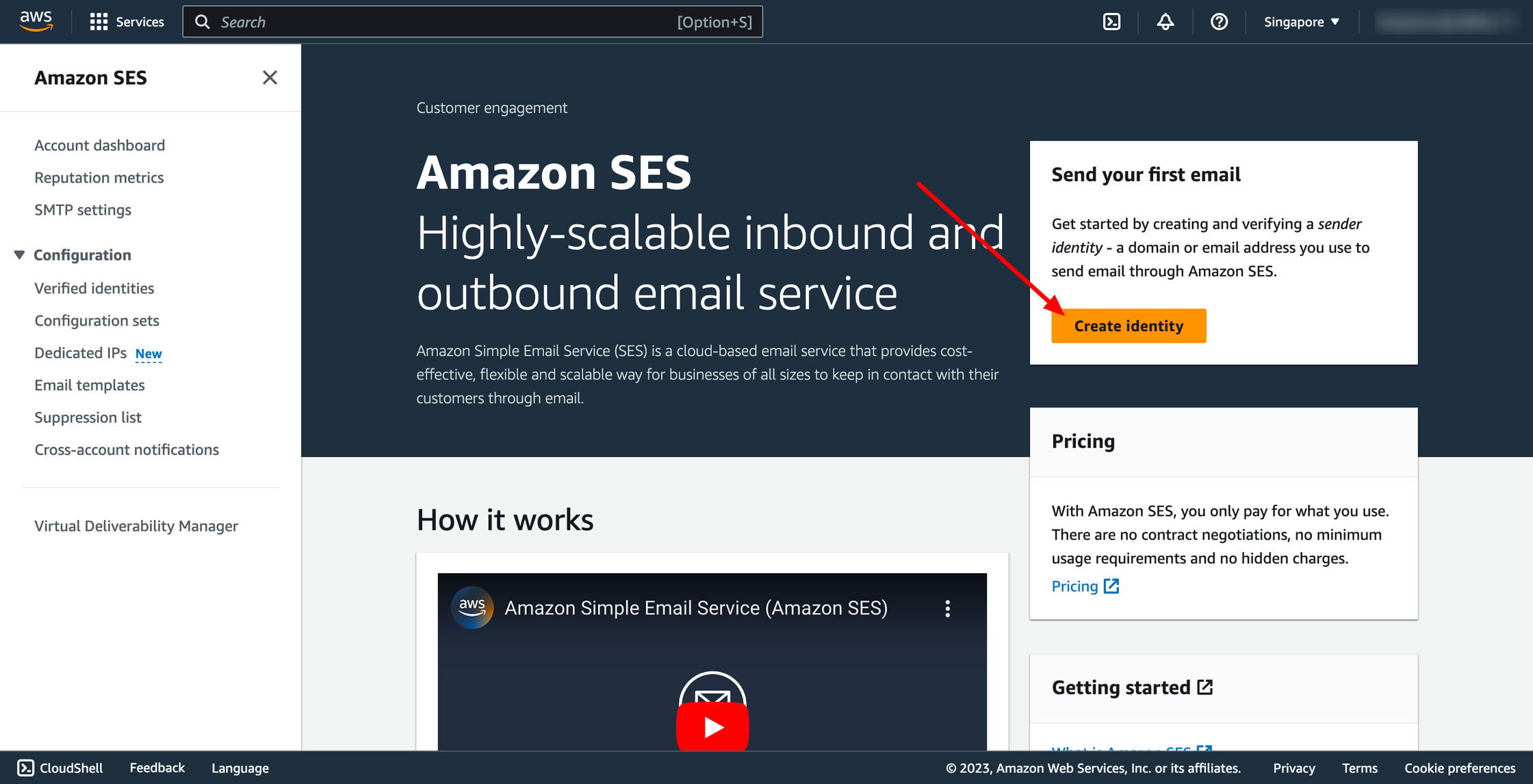
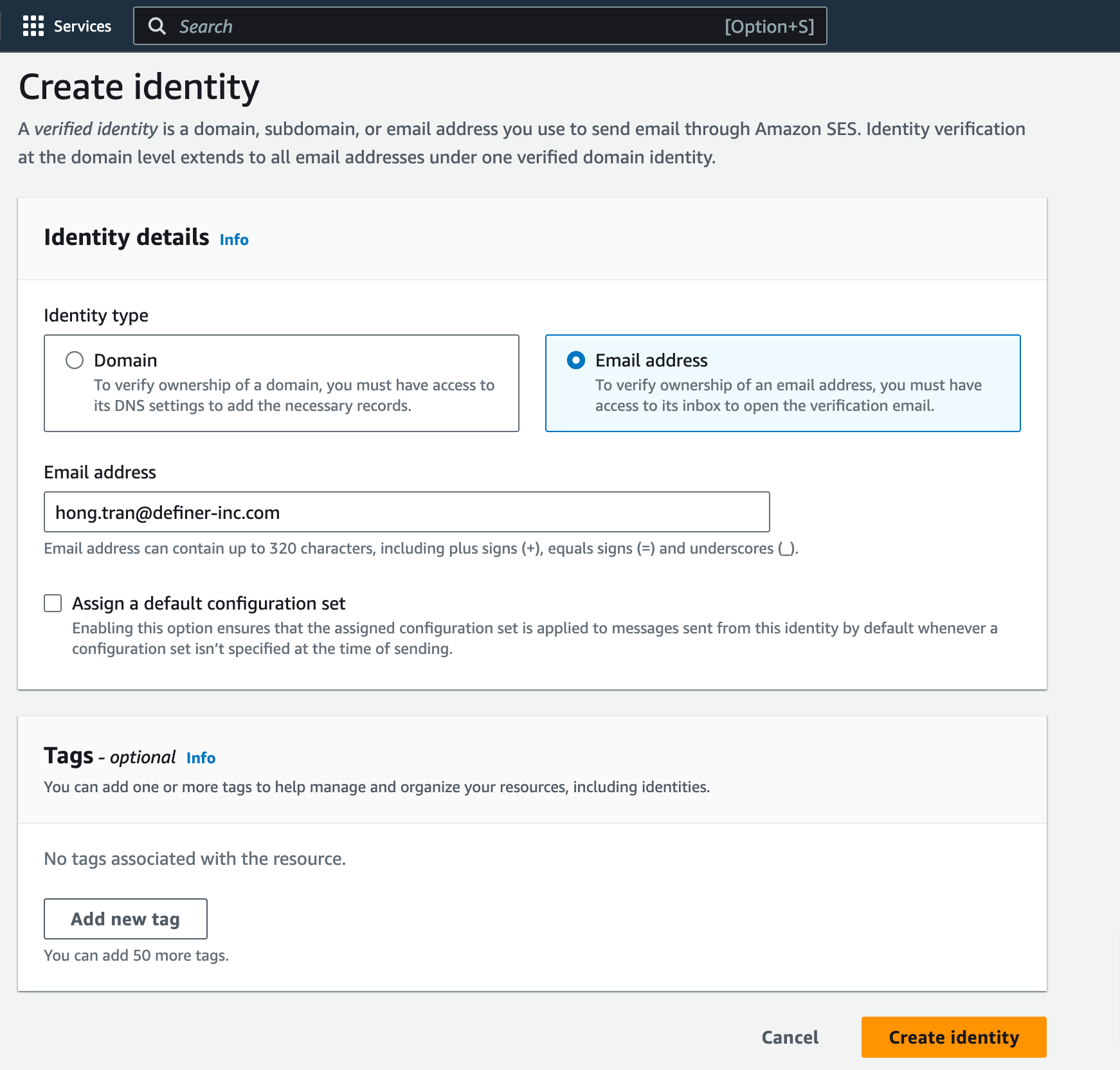
Then, click to create identity.
We will see the identity status is Verification pending. Please check you email inbox and click to verification link from Amazon.

After verify your email address, then identity status would be Verified.

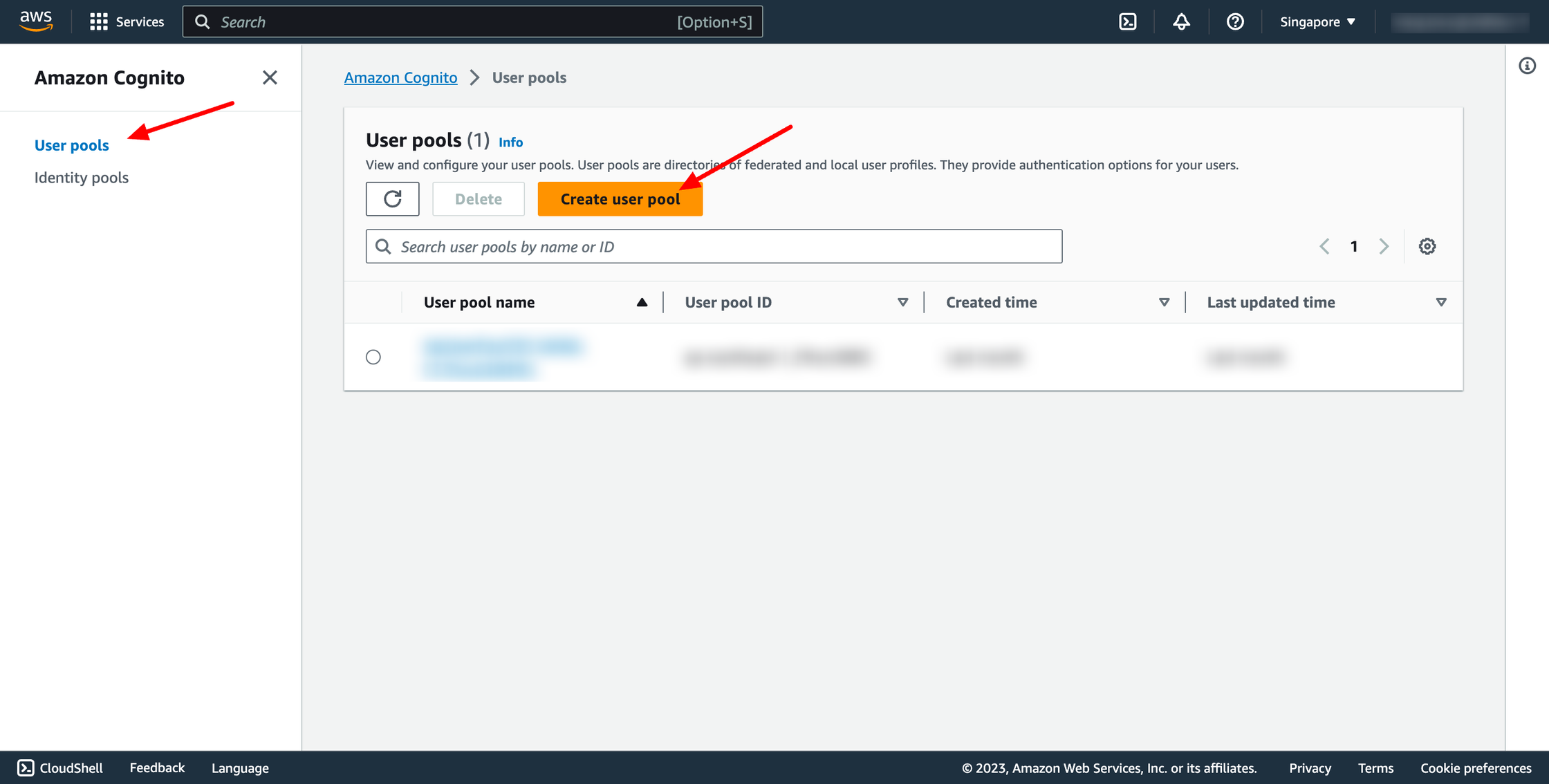 In Configure sign-in experience, choose the federated providers that you want to use with this user pool:
In Configure sign-in experience, choose the federated providers that you want to use with this user pool:
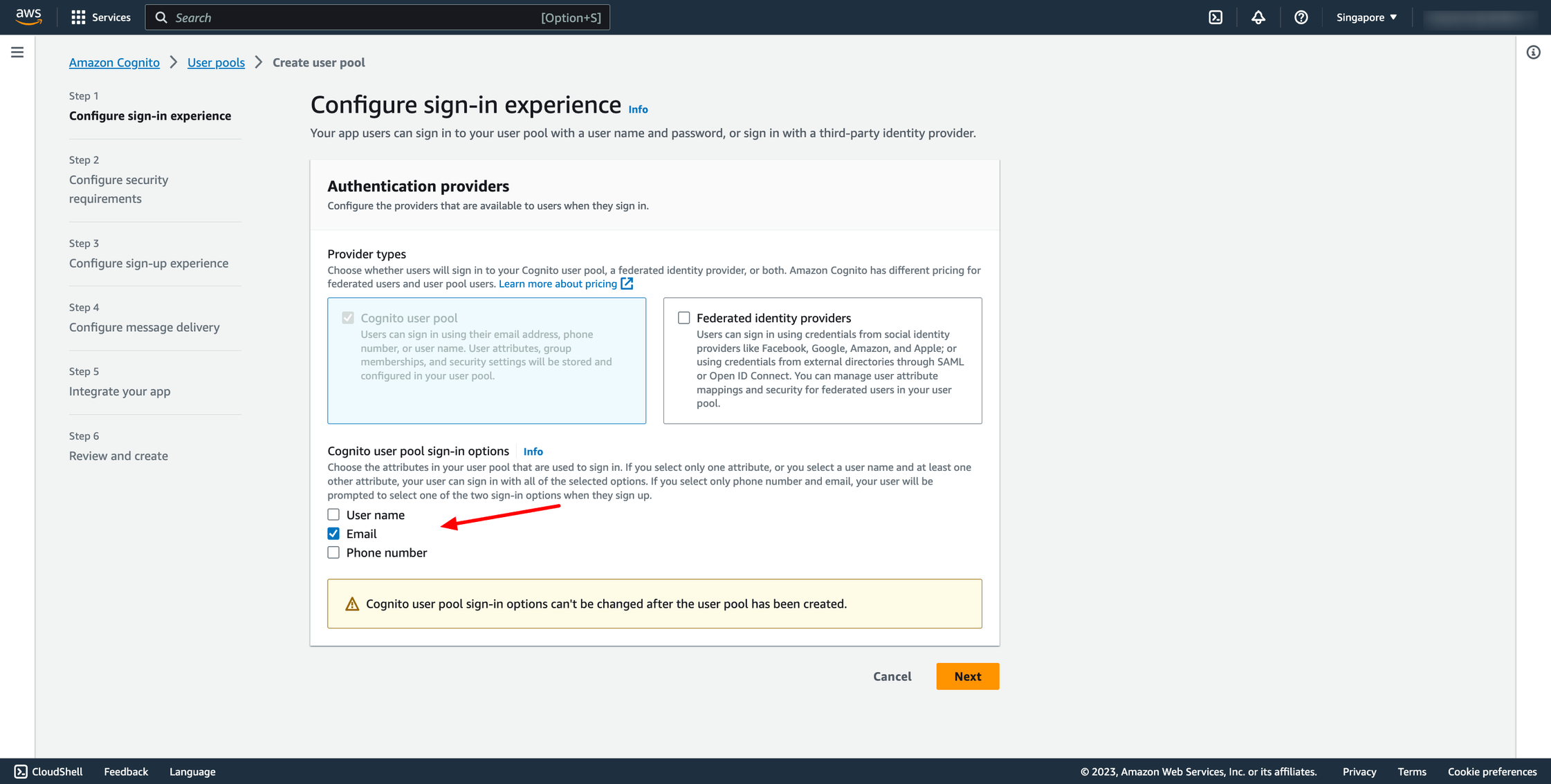 In Configure security requirements, choose your password policy, multi-factor authentication (MFA) requirements, and user account recovery options:
In Configure security requirements, choose your password policy, multi-factor authentication (MFA) requirements, and user account recovery options:

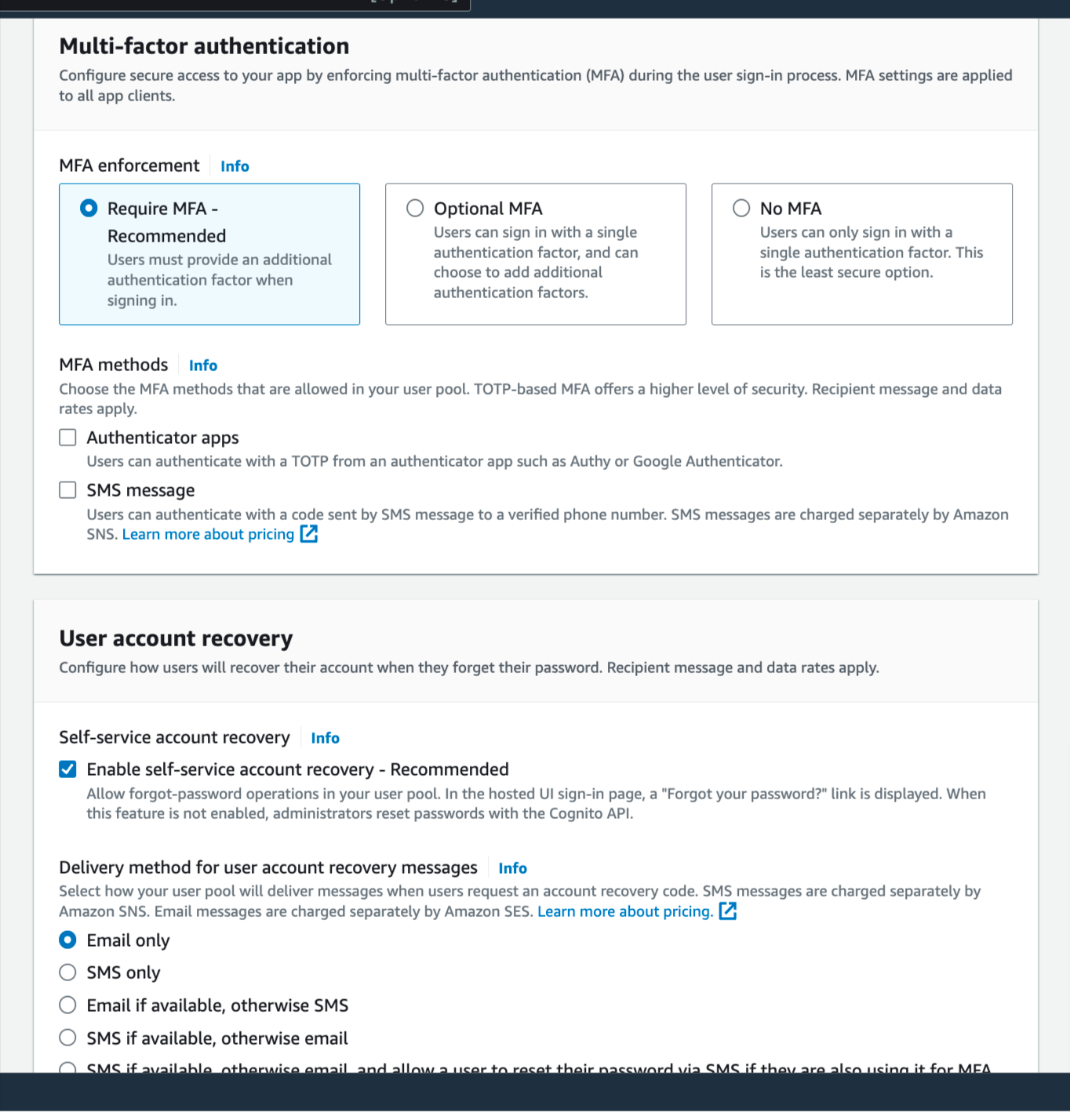 In Configure sign-up experience, determine how new users will verify their identities when signing up, and which attributes should be required or optional during the user sign-up flow:
In Configure sign-up experience, determine how new users will verify their identities when signing up, and which attributes should be required or optional during the user sign-up flow:
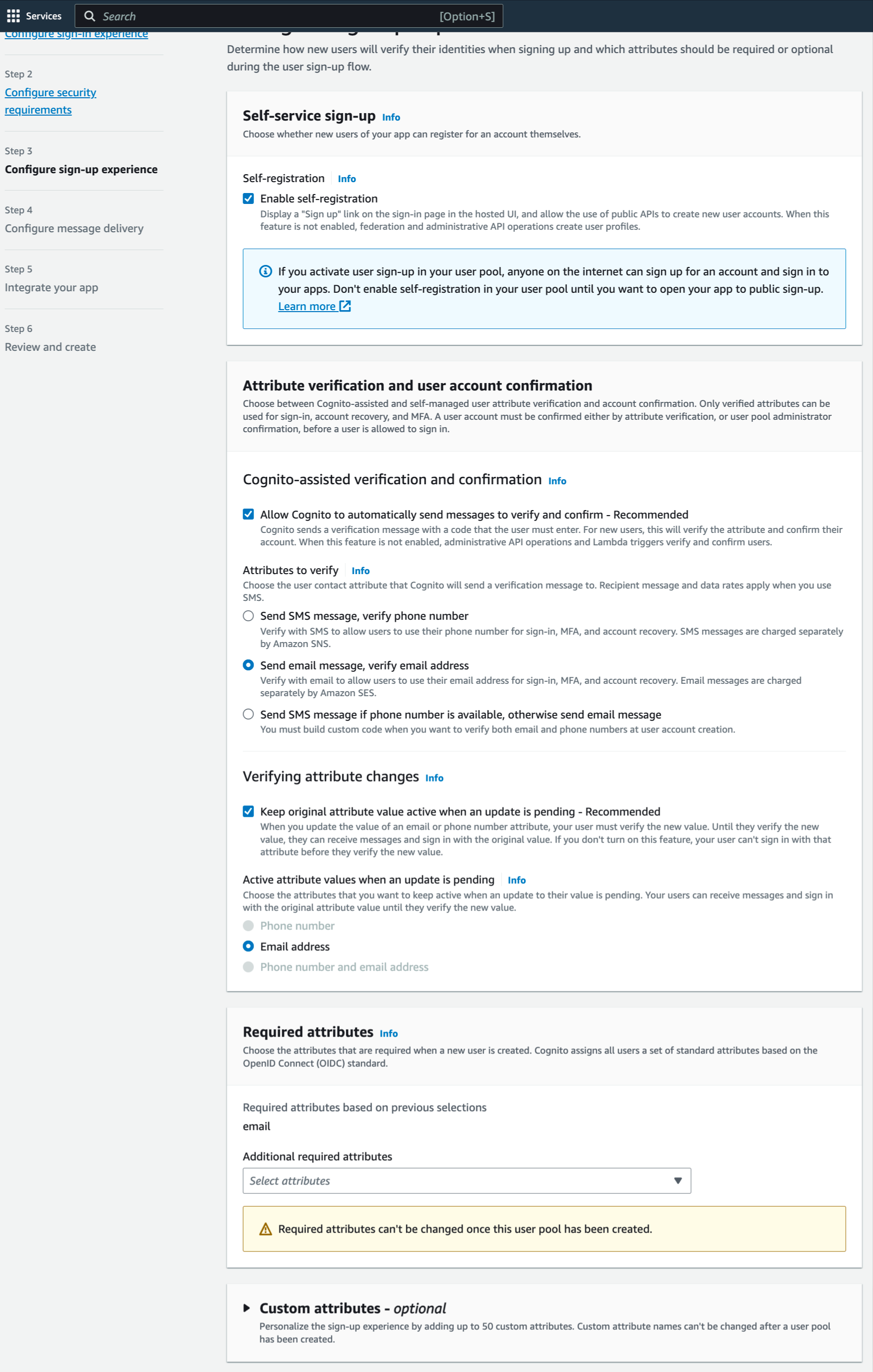 In Configure message delivery, configure integration with Amazon Simple Email Service (Amazon SES) and Amazon Simple Notification Service (Amazon SNS) to send email and SMS messages to your users for sign-up, account confirmation, MFA, and account recovery.
In this case, we choose Send email with Amazon SES → in FROM email address, you will see your email which you created in SES, choose it:
In Configure message delivery, configure integration with Amazon Simple Email Service (Amazon SES) and Amazon Simple Notification Service (Amazon SNS) to send email and SMS messages to your users for sign-up, account confirmation, MFA, and account recovery.
In this case, we choose Send email with Amazon SES → in FROM email address, you will see your email which you created in SES, choose it:
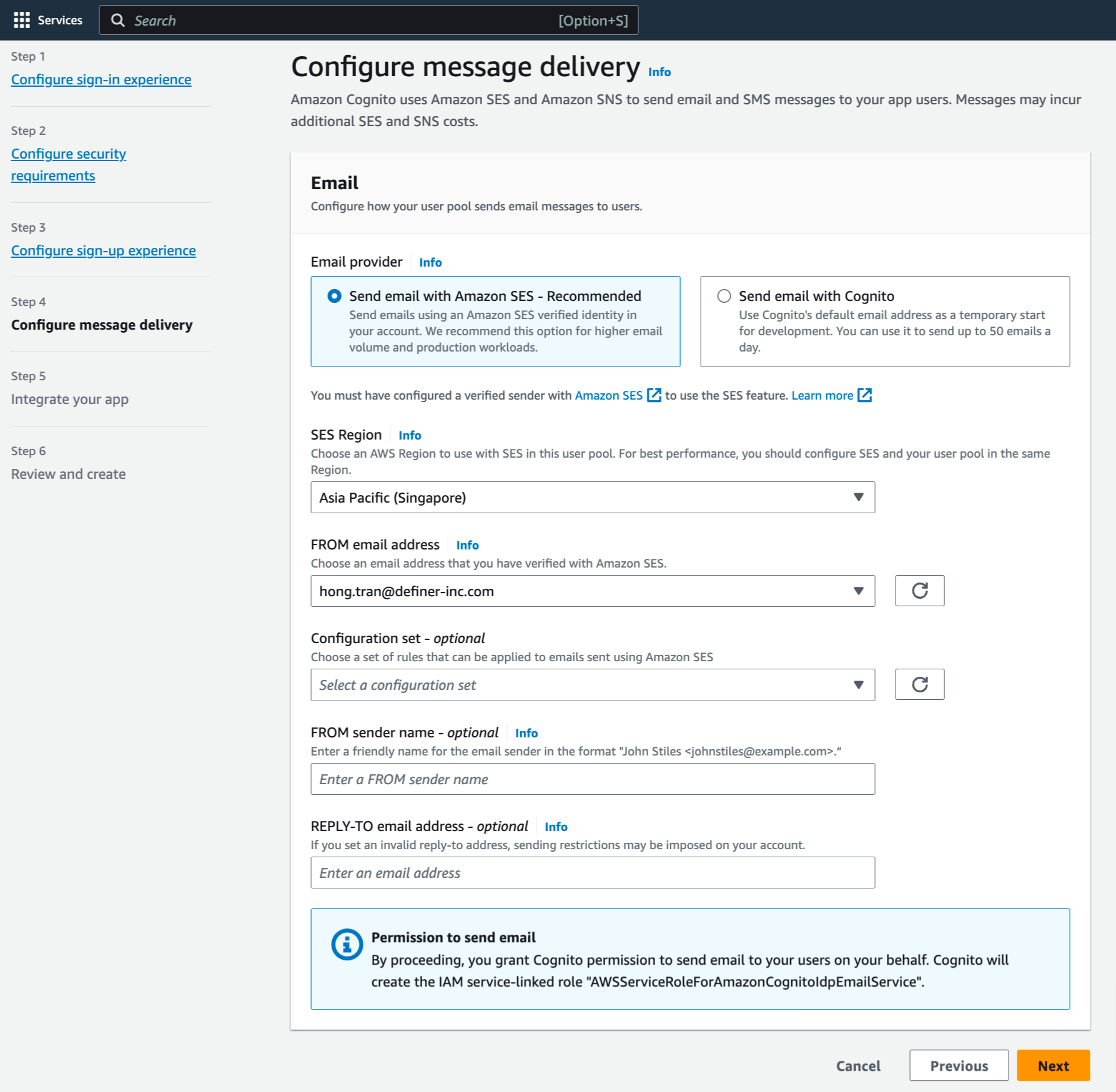 In Integrate your app, enter user pool name and app client name:
In Integrate your app, enter user pool name and app client name:
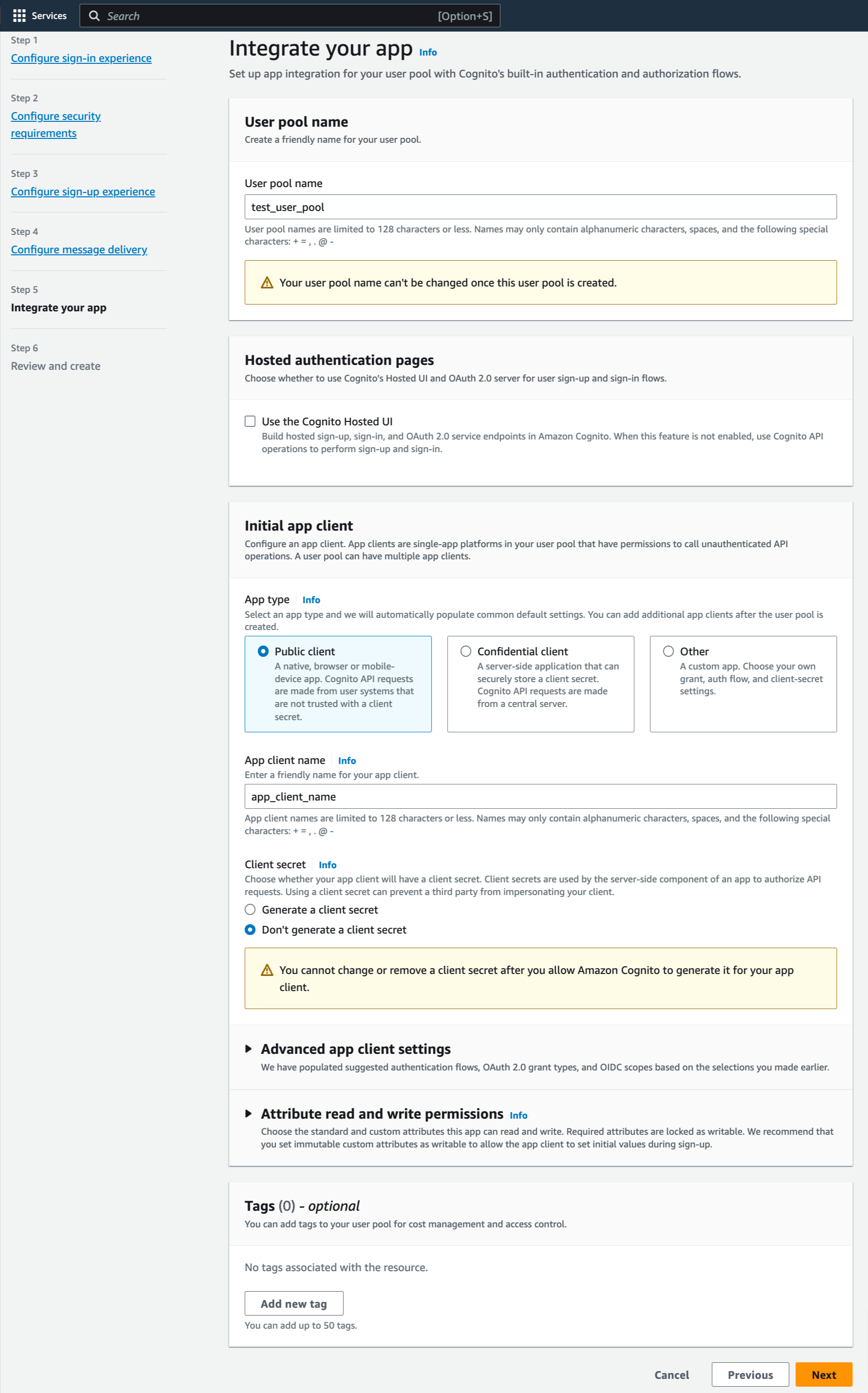 The last step is reviewing all of setting and confirm to create user pool.
Estimated Time
With DevOps knowledge: 4-6 hours
Without DevOps knowledge: 2-3 days
The last step is reviewing all of setting and confirm to create user pool.
Estimated Time
With DevOps knowledge: 4-6 hours
Without DevOps knowledge: 2-3 days
6. Creating AWS Cognito and AWS SES with Prismscaler
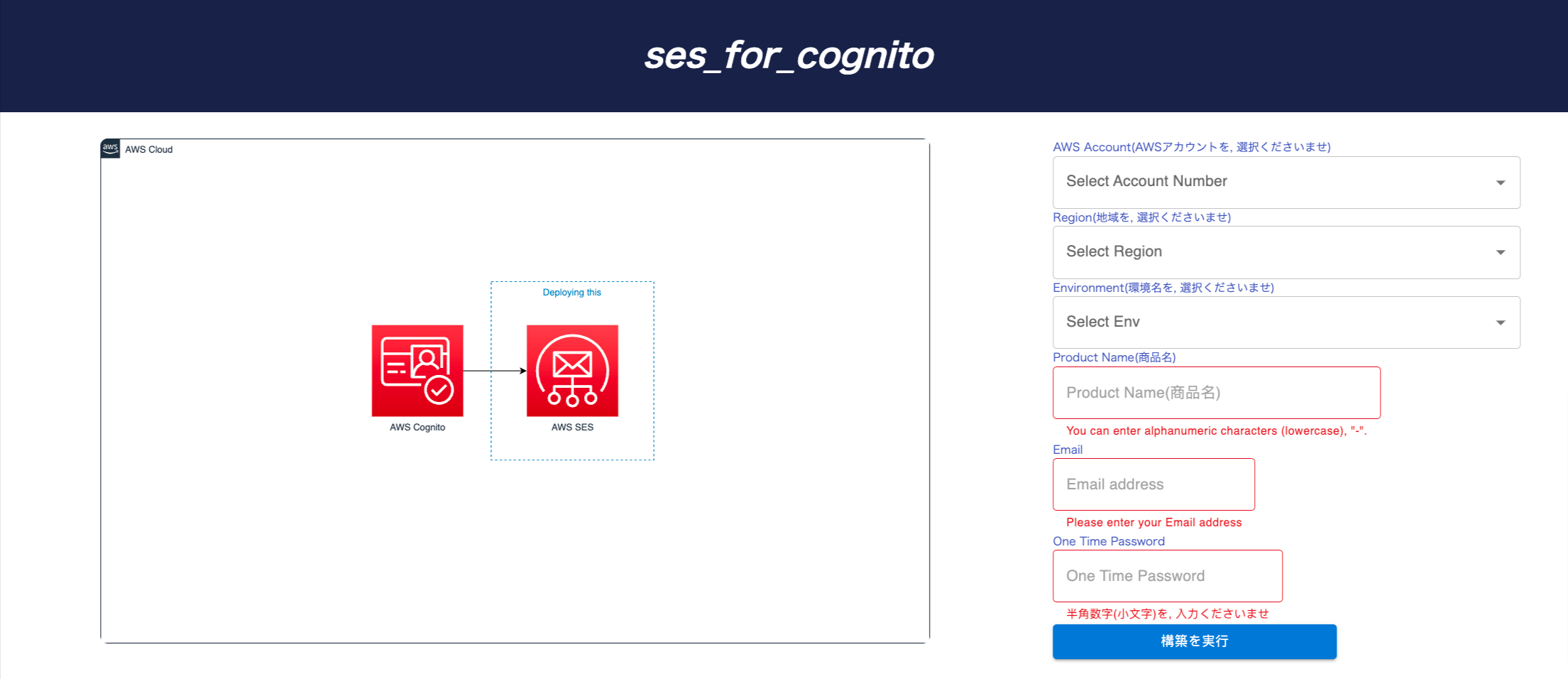 Create AWS Cognito on PrismScaler:
Create AWS Cognito on PrismScaler:
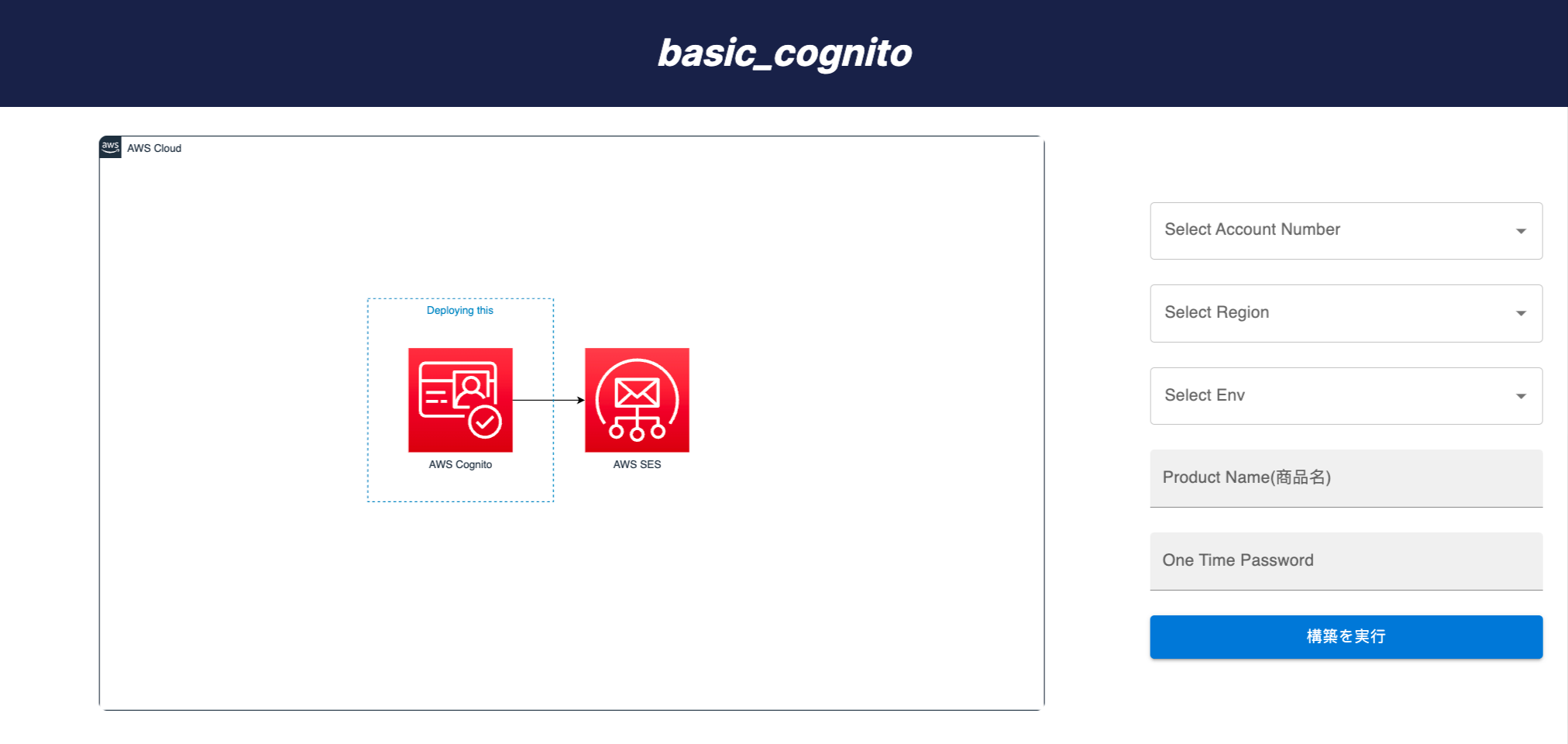 Estimated Time
5-15 minutes (without DevOps knowledge)
Estimated Time
5-15 minutes (without DevOps knowledge)
